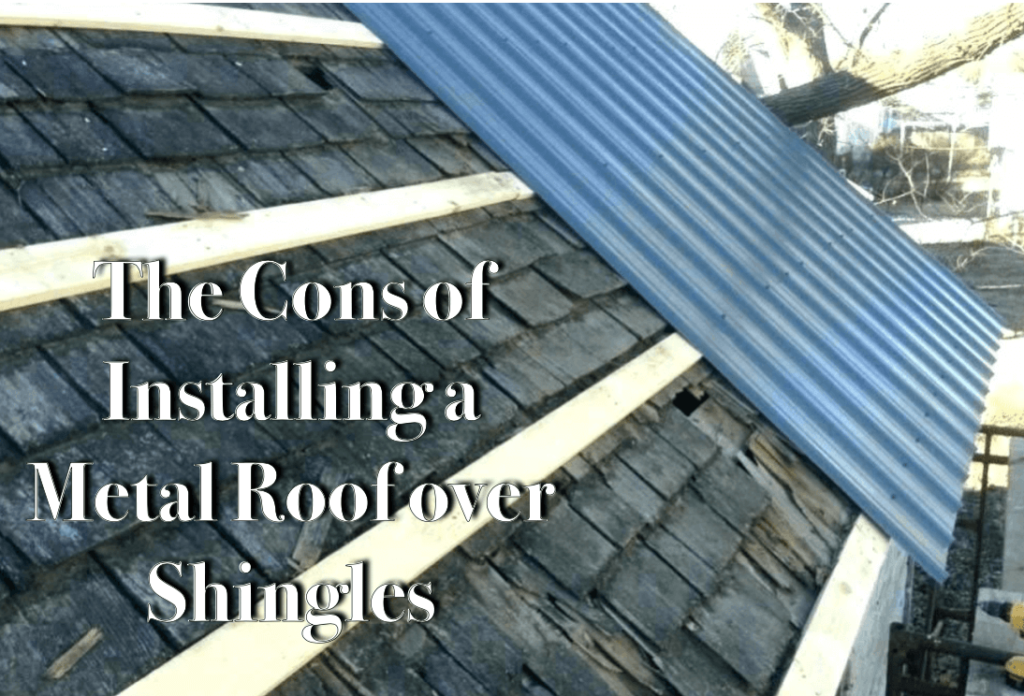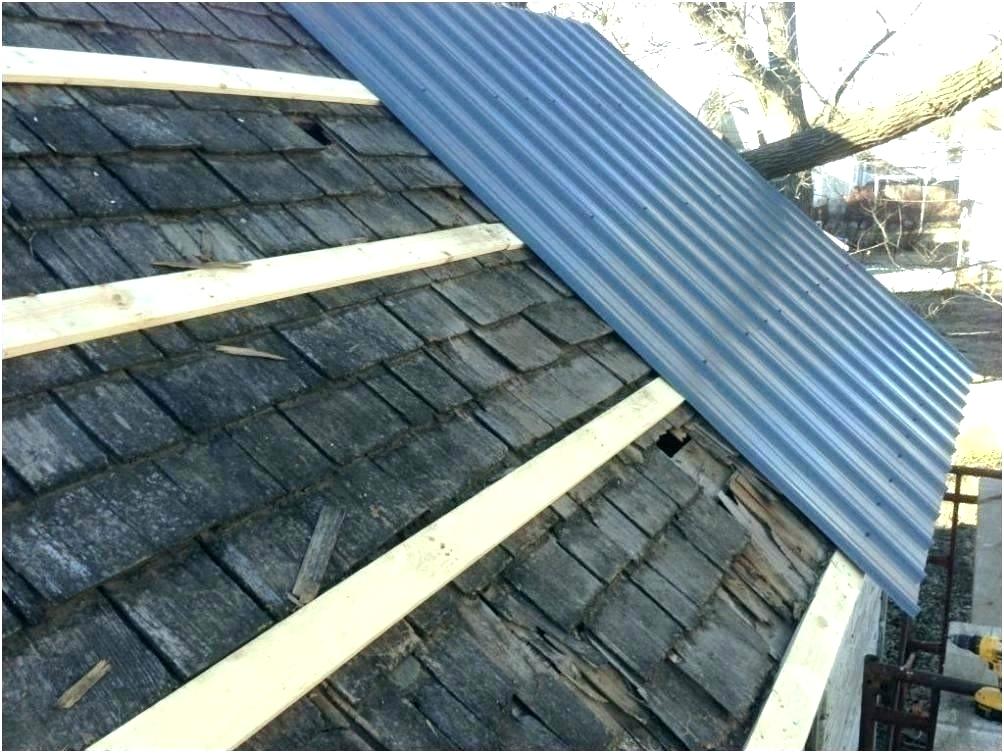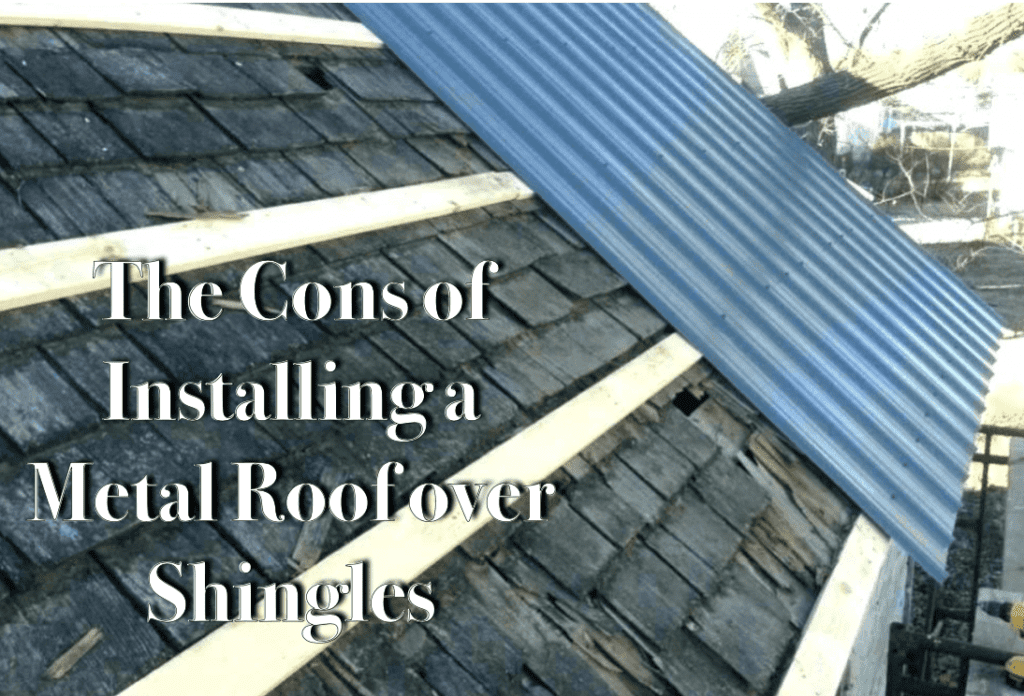If you’re considering installing a metal roof, you might be wondering whether removing the old roof is necessary. Well, the answer to that question is not so straightforward. While some homeowners opt for a complete removal, others choose to install the metal roof over the existing one. In this article, you will discover the advantages and disadvantages of both options, allowing you to make an informed decision that suits your specific needs and preferences. So, let’s dive into the world of metal roofing and explore your options!

Reasons to Remove Old Roof
Examining the Roof Structure
Before installing a metal roof, it is important to thoroughly examine the existing roof structure. This includes inspecting the trusses, rafters, and other components to ensure that they are in good condition and able to support the weight of the metal roofing material. If there are any structural issues, it is essential to address them before proceeding with the installation.
Assessing the Condition of the Old Roofing Material
Another crucial reason to remove the old roof before installing a metal roof is to assess the condition of the existing roofing material. Over time, traditional shingles can become damaged, cracked, or loose. By removing the old roof, you can accurately determine if there are any underlying issues that need to be addressed before installing the metal roofing. This includes checking for leaks, rot, or mold that may have formed beneath the shingles.
Ensuring Proper Installation of the Metal Roof
By removing the old roof, you provide a clean and smooth surface for the metal roofing material. This is important because any bumps or irregularities in the underlayment can affect the installation process and compromise the integrity of the metal roof. Removing the old roof eliminates the risk of any uneven areas that could cause pooling water or other problems down the line.
Preventing Future Issues and Costs
Installing a new metal roof without removing the old roof can lead to several potential issues and increased costs in the long run. Without properly addressing any existing problems, such as leaks or structural damage, these issues may worsen over time and require costly repairs or even a complete replacement of the metal roof. Additionally, the weight of the metal roofing material on top of the old roof can strain the structure and shorten its lifespan.
Factors that Determine if Removal is Necessary
Type and Condition of Old Roofing Material
The type and condition of the old roofing material play a significant role in determining whether removal is necessary. If the existing roof is made of asphalt shingles or similar materials, it is generally recommended to remove them before installing a metal roof. However, if the old roof is made of metal, it may be possible to install the new roof directly over it, depending on its condition.
Weight and Compatibility of Metal Roof
The weight of the metal roof is a critical consideration when deciding whether to remove the old roof. Metal roofing is generally heavier compared to traditional shingles, so it is important to determine if the existing roof structure can safely support the additional weight. Additionally, compatibility between the old roof and the metal roofing material should be taken into account to ensure a proper installation.
Local Building Codes and Regulations
Local building codes and regulations may also dictate whether the old roof needs to be removed before installing a metal roof. It is essential to consult with local authorities or building professionals to understand the specific requirements in your area. Adhering to these regulations is crucial for safety and compliance purposes.
Personal Preference and Budget
Lastly, personal preference and budget can influence the decision to remove the old roof. While it may be more cost-effective to install the metal roof over the existing roof, some homeowners prefer the peace of mind that comes with a fresh start and a completely new roofing system. It is important to weigh the pros and cons, considering both personal preferences and financial constraints.

Types of Metal Roof Installations
Metal Roofing Over Existing Shingles
One of the options for metal roof installation is to install it directly over the existing shingles. This method can save time and money since it eliminates the need for tearing off the old roof. However, not all roofs are suitable for this type of installation. It is crucial to consider factors such as the condition of the shingles, the weight of the metal roof, and local building codes before proceeding with this method.
Metal Roofing with Roof Deck Preparation
Another type of metal roof installation involves preparing the roof deck before installing the metal roofing material. This method requires removing the old roof, inspecting and repairing the roof deck if necessary, and installing underlayment and flashing before placing the metal roof. This method ensures a solid foundation for the metal roof and can help address any underlying issues with the roof deck.
Metal Roofing with Tear-Off
The tear-off method involves completely removing the existing roofing material before installing the metal roof. This method provides a clean slate and allows for a thorough inspection of the roof structure and deck. It also allows for any necessary repairs or modifications to the roof structure before the metal roof is installed.
Installing Metal Roof Over Existing Shingles
Benefits of this Installation Method
Installing a metal roof over existing shingles offers several benefits. The most significant advantage is the cost and time savings associated with avoiding the tear-off process. It eliminates the labor-intensive task of removing the old roof, which can be time-consuming and messy. This method also reduces the risks associated with exposing the interior of the home to the elements during the installation process.
Considerations and Limitations
While installing a metal roof over existing shingles can be convenient, there are some considerations and limitations to keep in mind. Firstly, the existing shingles must be in good condition and structurally sound. If there is evidence of extensive damage, rot, or mold, it is best to remove the old roof to address these issues properly. Additionally, installing a metal roof over existing shingles may not be suitable if weight limitations or local building codes prevent it.
Preparation and Installation Process
The process of installing a metal roof over existing shingles involves several steps. Firstly, the existing roof should be thoroughly cleaned to remove any debris or loose shingles. Next, a layer of underlayment is typically installed to provide an extra barrier against water infiltration. Finally, the metal roofing panels are secured to the roof using appropriate fasteners and installation techniques.

Metal Roofing with Roof Deck Preparation
Importance of Preparing the Roof Deck
Preparing the roof deck is crucial for the long-term success and durability of the metal roof. It ensures that the roof has a solid and stable foundation to support the weight of the metal roofing material. Additionally, preparing the roof deck allows for the inspection and repair of any underlying issues, such as rot or damage, which can compromise the integrity of the roof structure.
Determining the Condition of the Deck
Before installing the metal roof, it is important to determine the condition of the roof deck. This can be done through a thorough inspection, checking for any signs of damage, rot, or sagging. If any issues are detected, they should be addressed and repaired before proceeding with the installation. This ensures that the roof deck is in excellent condition and provides a secure base for the metal roof.
Materials and Steps for Roof Deck Preparation
The roof deck preparation process involves several steps. Firstly, any damaged or rotten sections of the deck should be replaced or repaired. This may involve removing and replacing plywood or other decking material. Next, a layer of underlayment is typically installed to provide an additional moisture barrier and prevent leaks. Finally, flashing is added around chimneys, vents, and other areas where water could potentially penetrate the roof.
Metal Roofing with Tear-Off
Complete Removal of Existing Roofing
The tear-off method involves completely removing the existing roofing material before installing the metal roof. This process ensures that the roof deck is thoroughly inspected, and any necessary repairs are made. Tear-off also allows for a fresh start, eliminating any potential issues that may have been hidden beneath the old roof.
Advantages of Tear-Off Installation
One of the main advantages of the tear-off method is the ability to address any underlying issues with the roof structure and deck. It allows for a comprehensive inspection, ensuring that any damage or rot is repaired before installing the metal roof. Additionally, tear-off enables a clean and even surface for the metal roof, ensuring a seamless and secure installation.
Challenges and Additional Costs
While tear-off provides many benefits, it does come with challenges and additional costs. Removing the old roofing material can be a labor-intensive and time-consuming process. It may also require the use of specialized equipment and disposal of the old roofing material, which can add to the overall cost of the project. However, the long-term benefits and peace of mind gained from a tear-off installation often outweigh these challenges.
Proper Disposal of Old Roofing Material
When completing a tear-off installation, it is important to properly dispose of the old roofing material. This may involve renting a dumpster or hiring a waste disposal service. It is essential to follow local regulations and guidelines for the disposal of roofing materials to ensure environmental compliance.

Common Concerns about Metal Roof Installation
Effect on Home Energy Efficiency
One common concern regarding metal roof installation is its effect on home energy efficiency. Metal roofs are known for their durability and reflective properties, which can help reduce heat absorption and improve overall energy efficiency. However, proper insulation and ventilation should also be considered to maximize the energy-saving potential of a metal roof.
Noise and Insulation
Another concern is the potential for increased noise levels with a metal roof. While metal roofs can be noisier than traditional shingle roofs during heavy rain or hail, proper insulation and underlayment can significantly reduce noise transmission. Additionally, the sound of rain on a metal roof can often be comforting to many homeowners.
Resale Value of the Property
Some homeowners may be concerned about the impact of a metal roof on the resale value of their property. However, in many cases, a metal roof can increase the resale value due to its durability, longevity, and low maintenance requirements. Metal roofs are often seen as a desirable feature by potential buyers, which can make the property more appealing and potentially fetch a higher sale price.
Hiring a Professional or DIY Installation
Benefits of Hiring a Professional
Hiring a professional for metal roof installation offers several benefits. Professionals have the necessary knowledge, expertise, and experience to ensure a proper and durable installation. They can accurately assess the roof condition, recommend the best installation method, and provide warranties or guarantees for their work. Hiring a professional also saves you time and effort, as they handle all aspects of the installation process.
Factors to Consider for DIY Installation
While hiring a professional is recommended for a seamless and worry-free installation, some homeowners may opt for a DIY approach for various reasons. If considering a DIY installation, it is essential to have proper knowledge of the installation process, including the materials, tools, and techniques required. It is also crucial to adhere to local building codes and safety guidelines to ensure a safe and successful installation.
Importance of Proper Safety Measures
Whether hiring a professional or opting for a DIY installation, safety should always be a top priority. Installing a metal roof can involve working at heights and handling heavy materials, so it is crucial to take appropriate safety precautions. This includes using safety harnesses, wearing protective gear, and following proper ladder safety protocols. If uncertain about any aspect of the installation, it is always best to consult with a professional.

Cost Considerations
Cost of Metal Roofing Materials
The cost of metal roofing materials varies depending on several factors, including the type of metal, the style of the panels, and the manufacturer. While metal roofing materials may have a higher upfront cost compared to traditional shingles, their durability and longevity often offset this initial investment. It is important to research different options and consider the long-term cost savings associated with a metal roof.
Labor Costs for Installation
The labor costs for installing a metal roof can also vary depending on the complexity of the project, the size of the roof, and the location. Hiring a professional roofing contractor will typically involve additional labor costs compared to a DIY installation. However, professionals ensure a proper and efficient installation, reducing the risk of errors or future issues that may lead to costly repairs.
Cost Comparison with Removing the Old Roof
When comparing the cost of metal roof installation with or without removing the old roof, several factors come into play. While removing the old roof adds to the initial cost of the project, it eliminates potential issues and additional costs that may arise from installing the metal roof over the existing roof. Thoroughly assessing the condition of the old roof and evaluating the long-term benefits can help make an informed decision.
Long-Term Savings and Return on Investment
While the initial cost of a metal roof may be higher than traditional roofing materials, its long-term savings and return on investment should also be considered. Metal roofs have a longer lifespan and require minimal maintenance compared to shingles, reducing the need for frequent repairs or replacement. Additionally, metal roofs often provide energy-saving benefits, which can lead to lower utility bills over time.
Conclusion
When considering the installation of a metal roof, it is important to evaluate whether removing the old roof is necessary. Factors such as the condition of the old roofing material, the weight and compatibility of the metal roof, local building codes, and personal preferences should be taken into account. Whether you choose to install the metal roof over existing shingles, with roof deck preparation, or through a tear-off process, each method has its own advantages and considerations. Additionally, understanding the common concerns and cost considerations associated with metal roof installation can help you make an informed decision. Ultimately, consulting with professionals and weighing the pros and cons will ensure a successful and long-lasting metal roof installation for your home.